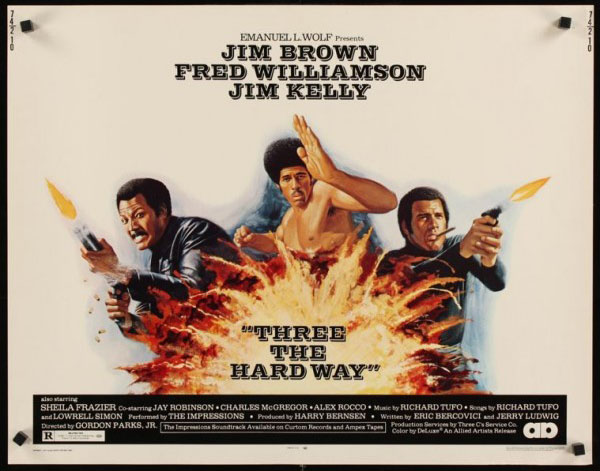
I have a friend who is a 10. He takes a dim view of another friend, who is a 3. The 10 sees 3 as limited in outlook and perhaps not possessing “real” intelligence. The 3, on the other hand, sees the 10 as incorrigibly impractical. The 10 just doesn’t see what is actually going on, says the 3; the 3 takes knowing what is going on as his particular area of expertise. I am mostly a 5 myself and spend a certain amount of time mediating between the 3 and the 10. It is a hopeless task, but hope is one of those things that doesn’t discriminate among those at 1, 3, 5, or 10.
The figures refer to years; they denote the span of one’s strategic outlook. A 1 is concerned with what must be done this year. Everything is urgent. Anything that does not satisfy the requirements of this year is a waste of time. For a 1, a 3-year outlook is suspect, a 5 a bit foolish, a 10 the object of contempt and satire. A 3, of course, sees the 1 as terribly short-sighted. You have to plan ahead, after all, though how far ahead is a matter of debate. The 5 sees the activities of 1 and 3 as things that are pretty much inevitable, as the wheels are already in motion. But the 5 may pull back from the scenarios of the 10. So much can happen between now and then: how can we know?
Before I get into how these differing outlooks pertain to publishing, let’s be clear about the important point that a meaningful span varies considerably industry by industry. Thinking about building a polypropylene plant in South Korea? Even a 10-year outlook is not enough for that kind of capital investment. Intel, Exxon Mobil, Dow Chemical: companies of this kind necessarily play a much bigger game when it comes to strategy and planning. A 10-year outlook may seem like forever in the media business, where the biggest investment is a Hollywood feature film–and there is nothing remotely comparable in STM–but that is but a fleeting moment for businesses that deploy large amounts of capital. It’s worth bearing in mind that so many of the commonplaces of digital publishing–the need for speed, the ability to pivot–mean nothing to an organization that has invested billions to build a plant in the developing world and for which political insurgency is as much a part of the calculations as the marketing plan.
Different members of an organization carry different numbers. The sales organization consists of a big collection of 1’s, distinguished not by their intelligence but by their uncomplicated view that the meaning of life is determined quarter by quarter. Without an energetic group of 1’s, an organization will fail, as the 1’s bring in the cash that funds everything else. They know this and resent the fact that some of the money they generate will go toward activities that don’t obviously redound to their benefit.
Nor are 1’s unnecessary in pre-revenue start-ups. Even though those companies are not ready for selling anything, they have to work with disciplined plans for product development, recruitment, and the raising of capital. It’s not done by the seat of the pants. One thing that professional investors bring to these start-ups is a sense of urgency and the need for clear short-term milestones. We all need 1’s and we need them all the time, even if their vision is limited and they have impatience with the longer-term objectives of an organization.
The 3’s are largely involved with the introduction of new products to established marketing channels. Editors are almost all 3’s; there is not much that they can do in one year. Most of publishing consists of working to that 3-year horizon. Think about it and you will see that it is true. The editor of a journal reaches out to researchers to invite submissions for research that is still ongoing. Submissions come in and work their way through the editorial process, including peer review. This is even more evident in the book world, where editors are on the lookout for certain kinds of books that will fill spaces in the scholarly record. The notion that this process is driven by authors is promulgated by people with a willful ignorance of how publishing actually works. Gold OA works differently, and that’s great: A is not a substitute for B.
Sitting out here in the land of the 5-year forecast can be lonely sometimes. “What’s next?” you say to the CEO or the Board. “How long can you push this string?” A company that is growing by double digits every year will wave away questions like these, but for slower-growing companies and those that are stalled outright (almost everybody in publishing today), the question about what’s next is becoming more pertinent.
To be a 5 means that you tend to work with new ventures. Some of these are start-ups, but many more of them are new operations within an established company. It’s an odd thing, but all the innovations that take place within established companies get overlooked when a disruptive start-up comes along. This doesn’t mean that disruptive innovations don’t exist, but that most innovations come from established companies seeking to expand the nature of their operations.
Many large companies, however, not having a crew of 5’s on board, find that essential innovations have been developed elsewhere. This prompts them to open their checkbooks and acquire the upstarts. The acquisitions of BioMed Central and Mendeley can be seen in this regard, expensive transactions that became necessary because the in-house 1’s and 3’s had taken too much control of their organization’s strategic thinking. We are going to be seeing more of this in the coming few years, as many established companies assess their positions and conclude that they have missed out on some important developments in digital media. It’s a good time to be an investment banker.
Is there any opportunity to sit down with my friends the 3 and the 10 and get them to engage in a productive conversation? Perhaps if I plied them with a bottle of wine in a cozy spot somewhere–or two bottles or three–the warm fellow-feeling of alcohol would enable them to bridge their differences, see the value of each other’s perspective. I fear, however, that this would be for naught: in the dehydrated morning, the solitary consciousness would once again see the world as it has always seen it. It’s not just that some perspectives differ from others, the reflective mind insists, but some perspectives are superior to others.
Organizations need all these perspectives and, if they are well managed, they know that difference does not imply superiority. This is why the team-building approaches of so many companies are a waste of time: 3’s and 10’s, not to mention 1’s and 10’s, cannot be made to dance together. Indeed, team-building is even worse than that as it can lead to the great downfall of any organization, management by consensus. The process of achieving consensus inevitably leads a company to join hands around the outlook of the 1’s and 3’s, and this is to abort the future. CEOs and Executive Directors are put in place to lead, not to take a survey of the troops. The art of management is to be able to get people to make large contributions for endeavors they do not fully understand.
So I will continue to share a drink privately with my friend the 3 and my friend the 10. I admire them both. It is a great relief not to have any particular desire to be understood.
Discussion
4 Thoughts on "Strategy 1, 3, 5, and 10"
Isn’t it the responsibility of the company’s board to take the long view and care about the 10s, while the staff is mostly concerned about shorter-term performance (1s and 3s), with the CEO working between these two groups to ensure that the best thinking about 10s gets turned into 5s and eventually 3s and 1s?
Many boards find it more comfortable to deal with the 1’s and 3’s, especially if their grasp of the industry is tenuous or there isn’t a visionary on the board who is also in sync with the CEO. The concreteness of annual performance against budget is very reassuring. Thinking about risk is not easy, especially in the non-profit sector, where risk-aversion is the price of entry.
Fortunately, that has not been my experience on the boards of either the AAUP or CCC, both non-profits. In fact, the CCC has its board attend a “strategic retreat” every two or three years just to make sure we don’t lose sight of the need to engage in 10s thinking. And we benefit from having quite a few visionaries on the board.
Hi, Joe. This is elegant, timeless and right. You’ve characterized roles and industries well, and the stages of organizations in spot-on fashion.
Do you think Today’s “climate” calls for varying numbers in various measures; can the impact of roles change to suit circumstances/opportunities/centuries in increase opportunities?
I’d say that Today’s Today is a unique case and that the uniqueness of the case poses a unique challenge for publishers (which may alter the roles of 1s, 3s, 5s, and 10s in enterprise decision making, as you suggest in closing).
Cliché to say now, but still applicable: “the rate of change is accelerating” — the age of “disruptive” b-moves really harkens back to the advent of the web; now, we have led, followed or been shuttered or acquired; we have internalized or are at work internalizing disruptive thinking in most all of our orgs. and industries (i.e., the ones that are striding ahead): e.g., as you note above, if orgs. are not innovating primarily, then they are buying innovations/innovating thinking, or innovating by proxy, which itself is evidence of innovative thinking at the strategy level (i.e., the presence of 5s & 10s in the boardroom).
So, first, I’d offer that orgs. seeing double-digit growth likely have already leveraged or tapped and gotten behind their 10s, else they came by growth by dumb luck or other inheritance (the death of those close to them) and from it will soon be parted.
And, next, I’d offer that we could locate much of the greatest strategically leverage-able change Today (e.g., scale, clouds: global real-time access) beyond the realm of content, per se, and rather comfortably within the realms of internal and ecological process, purpose and operations. That can be less than desirable/comfortable stomping ground for some. Further, some analysts and researchers encourage us to consider that we stand at an inflection point with all this accumulating tech-fed change (it is only going to “blow up” from here), and so, this period may be thought of, in the fullness of time, as the age of naturally disruptive 10s: “Gather Ye Crackpots While Ye May.” ^1
In sum, whereas in the Past 10s brought strategic advantage to a few, to drive growth, Today they are more and more called upon to save the jobs of many.
^1
http://www.ted.com/talks/erik_brynjolfsson_the_key_to_growth_race_em_with_em_the_machines
PS: In analyst-speak, the distributive impact (and desirable admixture or complementary deployment) of 1s, 3s, 5s, and 10s, may track with macro-trends in human history (periods of evolutionary change vs. relative equilibrium) as it does with job function (duties), industry (products), and business circumstance or cycle (P&Ls).
PSS: To Sandy’s point, I believe Boards can comprise and be amenable to the thinking of any assortment of 1s, 3s, 5s, and/or 10s, and that a traditionally 3s- and 5s-favorable Board may find increased advantage in laddering up their “out there” tolerance at this moment. …though, as history shows, this is sometimes most clearly and most frequently seen in hindsight.
Thanks again, Joe. Continued success in your chats with the numbers and all you do.


